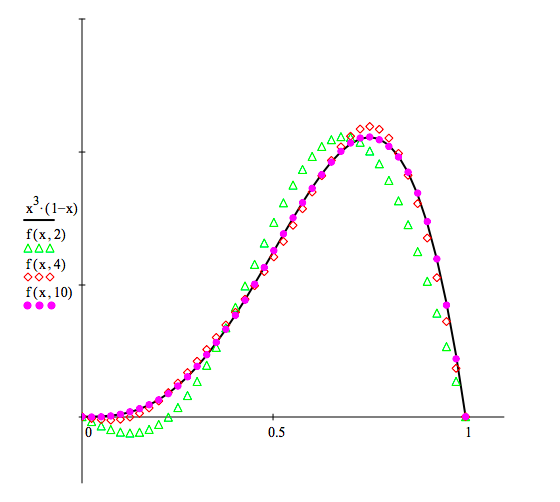11.7: Examining Fourier Synthesis with Dirac Notation
- Page ID
- 135010
The purpose of this tutorial is to use Dirac notation to examine Fourier synthesis. The first step is to write the function symbolically in Dirac notation.
\[f(x)=\big \langle x|f\big \rangle \nonumber \]
Select an orthonormal basis set, |n>, for which the completeness relation holds
\[\sum_{n}|n \big \rangle \big \langle n|=1 \nonumber \]
Expand |f> in terms of |n> by inserting equation (2) into the right side of equation (1). In other words write f(x) as a weighted () superposition using the basis set (the |n> basis set expressed in the coordinate representation).
\[f(x)=\sum_{n} \big \langle x|n\big \rangle \big \langle n|f\big \rangle \nonumber \]
Evaluate the Fourier coefficient, , using the continuous completeness relation in coordinate space.
\[\int |x' \big \rangle\big \langle x'|dx'=1 \nonumber \]
Equation (3) becomes,
\[f(x)=\sum_{n} \big \langle x|n \big \rangle \int \big \langle n|x' \big \rangle\big \langle x'|f \big \rangle dx' \nonumber \]
Now select a function
\[\big \langle x'|f \big \rangle = x'^{3}(1-x') \nonumber \]
over the interval (0,1). Choose the following orthonormal basis set over the same interval.
\[\big \langle x|n \big \rangle = \sqrt{2}sin(n \pi x) \nonumber \]
Substitution of equations (6) and (7) into (5) yields
\[f(x) = \sum_{n} \sqrt{2}sin(n \pi x) \int_{0}^{1} \sqrt{2}(n \pi x')x'^{3}(1-x')dx' \nonumber \]
The Fourier synthesis and the original function are shown for n = 2, 4, and 10 in the figure below.
\(x:=0,.025 ..1.0\)
\(f(x,n) :=\sum_{i=1}^{n}[ \sqrt{2}\cdot sin(i \cdot \pi \cdot x) \cdot \int_{0}^{1} \sqrt{2} \cdot sin(i \cdot \pi \cdot x') \cdot x'^{3} \cdot (1-x')dx')]\)


